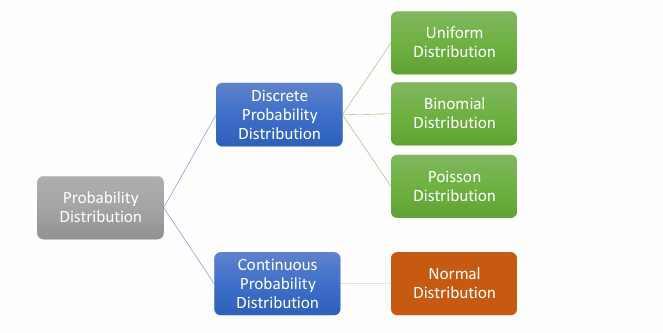CHAPTER 3: Probability and Probability Distributions
1/24
There's no tags or description
Looks like no tags are added yet.
Name | Mastery | Learn | Test | Matching | Spaced |
|---|
No study sessions yet.
25 Terms
a quantitative measure of uncertainty
a number that expresses the strength of our belief in the occurrence of an uncertain event
PROBABILITY
any process that allows researchers to obtain observations. It is any process that can be repeated under basically same conditions and yields well defined outcomes.
Random experiment
the set of all possible outcomes of a random experiment
Sample space (S)
Elements of the sample space are called ___
the number of sample points is denoted by __
sample points
n(S)
A subset of the sample space is called ___
event
Three Types of Probability
Classical Approach
Relative Frequency Approach
Subjective Probability
Based on the idea that certain occurrences are equally likely, that is, we assume that in a given experiment, all the sample points in the sample space have equal chances of occurring
Classical Approach
Also called a priori probability, which means we can state the answer in advance without performing the experiment
Classical Approach
An experiment is conducted or observed in large number of times that an event actually occurs, that is, probabilities are determined based on experimental approach
Relative Frequency Approach
This law states that “as a procedure is repeated again and again, the relative frequency probability of an event tends to approach the actual probability”
Law of Large Numbers
a variable that has a single numerical value (determined by chance) for each outcome of a random experiment
random variable
Random Variable 2 Types
Discrete Random Variable
Continuous Random Variable
has either a finite number of values or a countable number of values
Discrete Random Variable
has infinitely many values which can be associated with measurements
Continuous Random Variable
the listing of all possible value that a random variable can take on together with their corresponding probabilities.
Probability distribution
The mean of a random variable X is also termed as the expected value of X, written as ___
E(𝑋)

The variance of a random variable, written as ___
V(𝑋)

Probability Distribution

Discrete Probability Distributions Types
Uniform Distribution
Binomial Distribution
Poisson Distribution
outcomes with equal probabilities
Uniform Distribution
two possible outcomes
Binomial Distribution
counts or discrete outcomes
Poisson Distribution
Simplest of all the discrete probability distributions
“Rectangular distribution”
Random variable X assumes the values 𝑎1,𝑎2,…,𝑎𝑁 with equal probabilities
Uniform Distribution

Deals with random variables with only two possible outcomes
Binomial Distribution

Deals with random variables that involve counts in an interval
Applies to occurrences of some event over a specified interval
Used for describing behavior of rare events (with small probabilities)
Poisson Distribution
